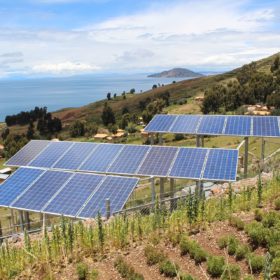
A new Indian study shows that standalone PV systems combined with pumped storage could be a solution to energy poverty in developing nations. This easily deployable, chemical-free approach might be best in countries that lack battery-recycling rules, the researchers said.
Researchers from India's National Institute of Technology have proposed a combination of off-grid PV and pumped hydro storage (PHS), based on open wells, as a feasible way to bring renewable energy to remote regions in developing countries.
The scientists said that the proposed solution do not include the deployment of any kind of chemical storage, which is seen as dangerous for many developing countries. as they do not have advanced technologies for recycling. Batteries must be charged and discharged for long periods of time and are often sources of failure in standalone PV systems in remote areas, where replacements and repairs can be extremely problematic.
By contrast, pumped hydro storage (PHS) is a well-established, mature technology with a negligible environmental impact, although it does have some issues, such as the need for water.
“This technology is reliable, promising and efficient with the ability to supply continuous power,” the researchers said. “As the PHS cost is concerned, it is one of the energy storage devices that have lowest cost/kWh. Its efficiency ranges from 65% to 87% and its life span is more than 40 to 60 years.”
The inverter-free system consists of solar power generator coupled with a DC motor to provide electricity to a water pump that extracts water from a well into a PHS tank. “The capacity of this tank is made to store the desired quantity of water needed for continuous operation of the system,” they said.
A second bigger tank is then built on the ground close to the open wells, at a higher elevation. “Its function is to receive water from water tank, and to maintain the pico hydro turbine head and discharge constant throughout the system operation,” the scientists explained. “The water pump and hydro turbine generator (HTG) are mounted on two separate strong foundations, which are constructed slightly over the water surface inside the open well.”
The system can store energy energy when output surpasses demand, but also in a continuous manner, throughout the whole day, when the water pump is powered by the PV array. All the generated electricity is used for water storage in the form of potential energy. This is then used for electric power generation during the day and night. After passing through the HTG, the water is then discharged into the open well again and the cycle can restart.
The Indian group said that the proposed system may have a levelized cost of energy (LCOE) of $0.053/kWh, with a payback period of 18.81 years and an expected lifecycle of around 50 years. However, the scientists said that these estimations may vary from country to country and from region to region within countries. Optimization techniques can be implemented to further improve efficiency and reduce costs, they said.
They described the system in “Uninterrupted sustainable power generation at constant voltage using solar photovoltaic with pumped storage,” which was recently published in Sustainable Energy Technologies and Assessments.
Lắp đặt điện mặt trời Khải Minh Tech
https://ift.tt/2X7bF6x
0906633505
info.khaiminhtech@gmail.com
80/39 Trần Quang Diệu, Phường 14, Quận 3
Lắp đặt điện mặt trời Khải Minh Tech
https://ift.tt/2ZH4TRU
Không có nhận xét nào:
Đăng nhận xét